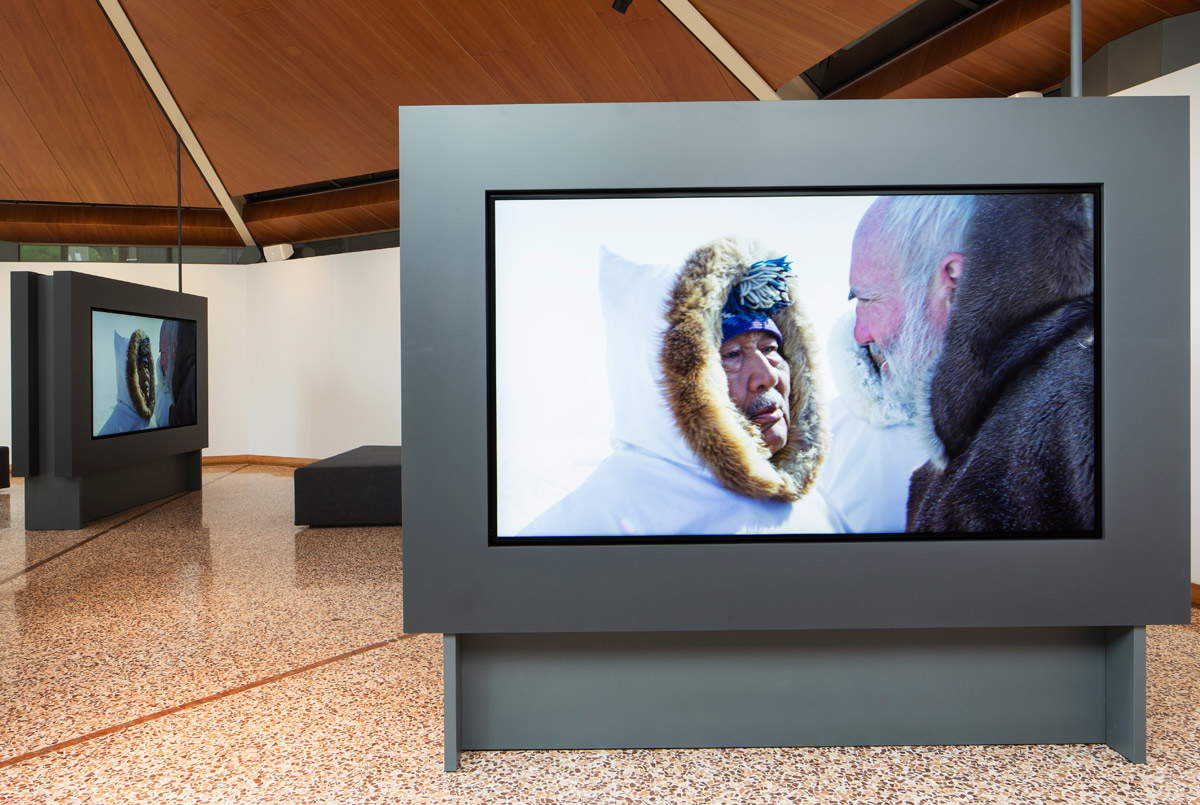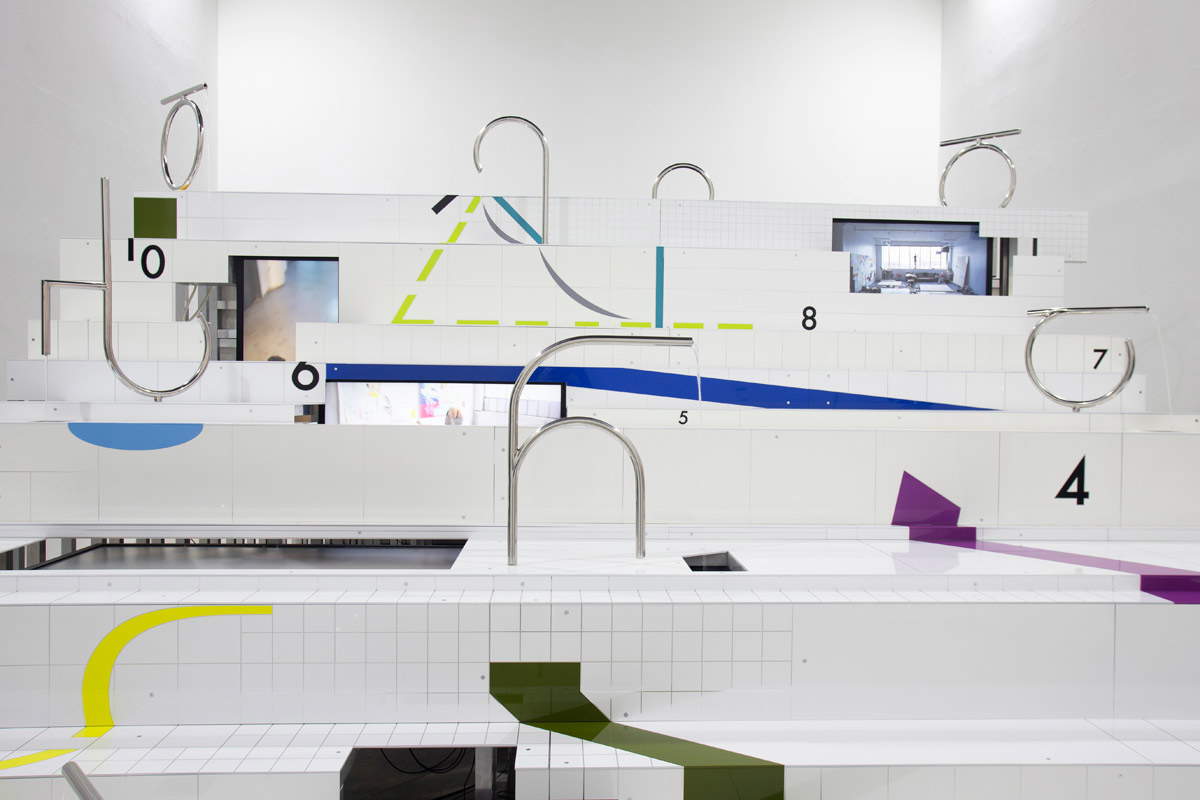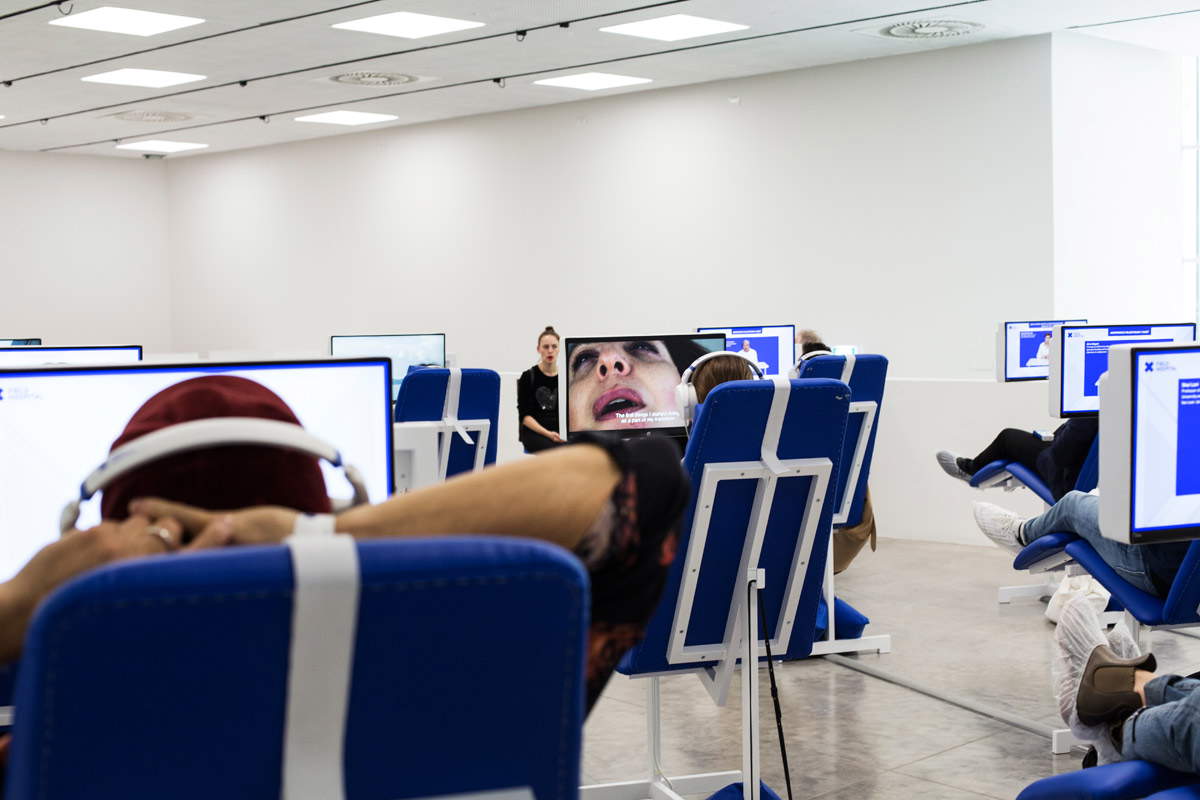A few days after the opening of the fifty-eighth Venice Biennale, we had published our top 10 of the best national pavilions (as well as commentary on the winner of the Golden Lion for the best national participation, the pavilion of Lithuania). However, the review on the Biennale could not be complete without our flop 10: as is to be expected from an event of the Biennale’s magnitude, not everything is good and not everything is well done, quite the contrary. So below, after careful evaluation, and as always ranking from tenth to first place (i.e. the worst), are the worst pavilions of the 2019 Biennale.
10. Italy
Exhibition: Neither other nor this: the challenge to the labyrinth. Artists: Enrico David, Liliana Moro, Chiara Fumai. Curator: Milovan Farronato.
Actually, Italy’s pavilion would not even be from “flop 10” because, indeed and honestly, there is worse. However, the exhibition curated by Milovan Farronato (the real artist, let’s face it), however cultured, appeared to many to be forced and inconsistent. And Italy, the host country, should not present itself with such a sluggish proposal at the Venice Biennale. We are a far cry from the 2017 pavilion (then, yes, Italy’s exhibition was among the best proposals). However, we will have a chance to elaborate with an article on the subject.
 |
| Italy Pavilion. Ph. Credit Italo Rondinella |
9. Madagascar
Exhibition: I have forgotten the night. Artist: Joël Andrianomearisoa. Curators: Rina Ralay Ranaivo, Emmanuel Daydé.
Along with Ghana, Malaysia and Pakistan, Madagascar is one of four debutant nations at the Venice Biennale. And certainly one must be honest: the idea of I have forgotten the night would not be bad either. Artist and curators have come up with an “immersive” pavilion that takes the audience on a walk “into the night” among a cascade of black paper. The curators’ presentation reads that “Joël Andrianomearisoa unveils the immaterial of the invisible world, turning the world elsewhere, when the iron sun is forgotten in the blue of the night, when the black light no longer gives birth to the day” (whatever that means). Too bad the day does indeed dawn: if you happen upon a clear day and in the early afternoon, the light filtering through the Arsenal’s gates is dazzling and throws off all good intentions of “majesty of the beyond,” of “sad wanderings,” of melancholy experiences. It all boils down to a walk of a couple of minutes (that’s how long it takes) between sheets of black paper hanging from the ceiling.
 |
| Madagascar Pavilion. Ph. Credit Italo Rondinella |
8. Canada
Exhibition: Isuma. Artist: Isuma (Zacharias Kunuk, Norman Cohn, Paul Apak, Pauloosie Qulitalik). Curators: Asinnajaq, Catherine Crowston, Josée Drouin-Brisebois, Barbara Fischer, Candice Hopkins.
The Canadians probably had the wrong exhibition: they were supposed to participate in the film exhibition. Their pavilion is nothing more than a documentary film about the Inuit (who, moreover, make up 75 percent of the presenting art collective): set in 1961, the film tells of a nomadic group of Inuit, led by Noah Piugattuk, who are joined by a Canadian government appointee intent on convincing them to move to a village where they can send their children to school and where they can live in a manner more in keeping with Western standards. But, of course, the group is completely reluctant to accept the proposal. Certainly interesting and topical, but pretentious and exaggerated to call it video art. And the curators should understand that the Art Biennial is perhaps not the most appropriate place to force the audience to watch a 112-minute video about the Baffin Island Inuit speaking in their native language (but with English subtitles).
 |
| Pavilion of Canada. Ph. Credit Francesco Galli |
7. Georgia
Exhibition: Rearmirrorview, simulation is simulation, is simulation. Artist: Anna K.E. Curator: Margot Norton.
A tiered structure covered with tiles, faucets everywhere (reproducing letters of the Georgian alphabet) with here and there screens showing the artist, Anna K.E. (class of 1986, ballet dancer) moving in unspecified environments meant to suggest how the body relates to the context (and faucets with the alphabet have anything to do with it?). In the back, everything you see on the front, but in the negative. The result looks like a cross between Leroy Merlin, Euronics, and a municipal swimming pool. And it is not clear what the artist is trying to show us.
 |
| Georgia Pavilion. Ph. Credit Italo Rondinella |
6. Israel
Exhibition: Field Hospital X. Artist: Aya Ben Ron. Curator: Avi Lubin.
Field HospitalX recreates a hospital. One enters a waiting room and at the entrance is given a number with which to stand in line to wait for a “visit” shift (while waiting, one watches a video explaining the installation). Once called, you enter a soundproof booth where you give a shout out. That done, you visit a “care-kit,” a video work where there is an artist telling a story of social injustice. You then go on to listen to experts from various fields tell a different point of view than what has just been seen. In short: waiting for half an hour to watch a video telling a story of social injustice and listening to a different point of view on the same video is not really the most interesting thing to do in the Biennial. To get the same experience, just turn on any TV network’s talk show. And you save yourself the queue at a fake hospital, which is not exactly the nicest thing in the world.
 |
| Israel Pavilion. Ph. Credit Francesco Galli |
5. Poland
Exhibition: Flight. Artist: Roman Stańczak. Curators: Łukasz Mojsak, Łukasz Ronduda.
For the Polish pavilion, artist Roman Stańczak came up with an “upside-down plane” that, according to his intentions, should be “a symbol of strength that has the possibility to unite a divided society by showing the conflict between modernity and spirituality.” But here, rather than entering the conflict between modernity and spirituality, it feels like we have ended up on the set of Lost. Or even better, seeing the wreckage of the plane from Savages, the 1990s film starring Ezio Greggio and Franco Oppini (the aircraft is similar). The only thing missing is Scatman John singing in the background.
 |
| Pavilion of Poland. Ph. Credit Francesco Galli |
4. Brazil
Exhibition: Swinguerra. Artists: Bárbara Wagner & Bejamin de Burca. Curator: Gabriel Pérez-Barreiro.
Swinguerra, the curators inform us, is a crasi between the word “swingueira,” a kind of dance typical of the Brazilian city of Recife, and “war.” Beyond the priceless originality of the pun, the audience, upon entering the Brazilian pavilion, will see nothing but videos of people dancing all the time. Bárbara Wagner explains that swingueira is a phenomenon that stems from the need for social integration, “it winds its way through the experience of identity and arrives on stage and on Instagram as a form of entertainment fueled by the mainstream, but which absolutely survives outside of it.” All very nice, but where is the art? Is filming a group of Recife residents dancing enough to end up at the Venice Biennale?
 |
| Brazil Pavilion. Ph. Credit Francesco Galli |
3. Austria
Exhibition: Discord Ergo Sum. Artist: Renate Bertlmann. Curator: Felicitas Thun-Hohenstein.
We are all grateful to Renate Bertlmann for her contribution to the feminist movement and what she has done for the cause of women and to make us live our sexuality in a more open and peaceful way. However, her proposal for the Venice Biennale is really one of the worst exhibitions. She would like to be subversive, a purpose that is already difficult in itself in the more institutionalized apparatus of the art world. But its subversion is mainly substantiated by an installation that reproduces roses in the shape of female genitalia pierced by sharp spikes: kitsch and banal. Otherwise, the exhibition is a kind of (very chaotic) retrospective of what Bertlmann did years back, including the celebrated Zärtliche Berührung. At most one can take the Austrian pavilion as a moment of review (not well done though) on one of the most interesting figures of 1970s feminism.
 |
| Pavilion of Austria. Ph. Credit Francesco Galli |
2. Spain
Exhibition: Perforated by. Artists: Itziar Okariz, Sergio Prego. Curator: Peio Aguirre.
The curator writes: “the main gesture and trait of this exhibition is to open, to expand space through an occupation that is actually its opposite, a non-occupation or an emptying [...]. To perforate means to partially pierce something, a thing, an image or a space, going through it but allowing a glimpse of what it was in the first place, altering it in the act of perforation.” And how is this perforation implemented? Itziar Okariz talks to inanimate objects, performs breathing exercises in front of a microphone and engages in sympathetic urination in public spaces, Sergio Prego hangs bags of rubbish from the outside walls of the pavilion. It is the most useless pavilion of the Biennale.
 |
| Pavilion of Spain. Ph. Credit Francesco Galli |
1. Egypt
Exhibition: Khnum across times witness. Artists: Islam Abdullah, Ahmed Chiha, Ahmed Abdel Karim. Curator: Ahmed Chiha.
One of the artists self-curates the exhibition and the results are not exactly brilliant. Indeed: in this Biennale it is really hard to imagine anything worse than Egypt’s pavilion. A fake pyramid, plastic sphinxes with screen-like heads, a burrow where one necessarily passes stooping or kneeling. Basically the worst of Hollywood’s imagery of ancient Egypt translated into Venetian pavilion form. Not even a b-movie about Tutankhamun could do worse, and in the face of all this even any good intentions of “fusing past and present, ancient and modern,” as per the curator’s note. And as if that were not enough, at the entrance Egypt introduces us to its participation in the Venice “BIENNIALE” (sic!). Just the icing on the cake of this apotheosis of trash was missing.
 |
| Pavilion of Egypt. Ph. Credit Francesco Galli |
Warning: the translation into English of the original Italian article was created using automatic tools. We undertake to review all articles, but we do not guarantee the total absence of inaccuracies in the translation due to the program. You can find the original by clicking on the ITA button. If you find any mistake,please contact us.